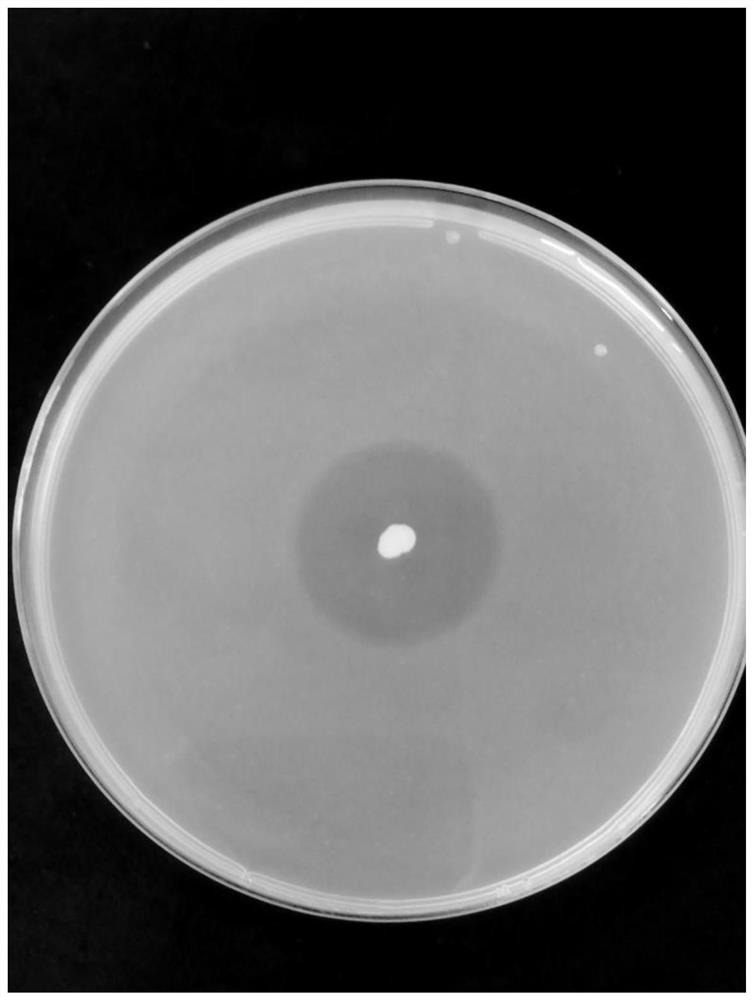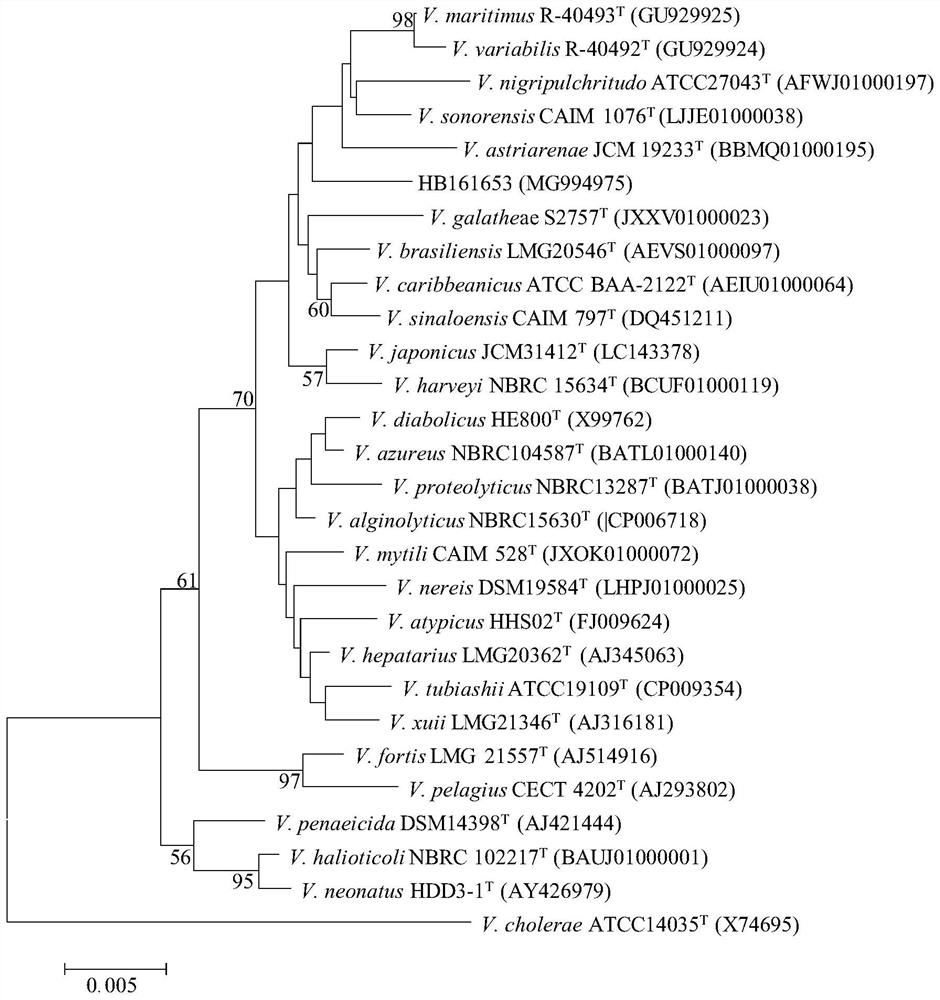High-yield alginate lyase strain and application thereof
A technology of alginate lyase and strain, applied in the field of microorganisms, can solve the problems of restricting wide application, low enzyme-producing ability of strains, unsuitable for industrial production and the like
- Summary
- Abstract
- Description
- Claims
- Application Information
AI Technical Summary
Problems solved by technology
Method used
Image
Examples
Embodiment 1
[0034] Example 1 Isolation and screening of Vibrio HB161653GDMCC No.61929
[0035] Sargassum samples were collected from Tanmen Port, Qionghai, Hainan Province. Take 10g of Sargassum algae sample, cut it into pieces and dissolve it in a sterile state, put it in 90ml of sterile seawater, shake it in a constant temperature shaker at 28°C and 200r / min for 30min, and after standing for 5min, take the supernatant to prepare 10 -2 ~10 -4 series of suspensions. Pipette 0.1 ml of the suspension, spread it on 2116E medium supplemented with 0.05% sodium alginate, and place it in a 30°C incubator for upside-down culture. When the colony grows, according to the phenotypic characteristics of the colony shape, color, edge state, transparency, surface dry and wet state, etc., a single colony is picked and streaked and purified to obtain a pure culture. After preliminary sorting, number and save.
[0036] The isolated bacterial strains were tested for alginate lyase activity, and the stra...
Embodiment 2
[0043] Example 2 Species identification of Vibrio HB161653
[0044] A single colony of strain HB161653 was picked by plate streak method, inoculated on 2116E solid medium, and incubated at 37°C at a constant temperature. When cultured for 2 days, the colony was 2-4mm in diameter, milky yellow, round, slightly convex, translucent, moist and smooth on the surface, and neat in the edges; Vibrio HB161653 can grow normally under the conditions of 25~37℃, pH 6~9, 1.5~4.0%(w / v) NaCl.
[0045] The physiological and biochemical characteristics of the strain HB161653 were identified by referring to the Manual for the Identification of Common Bacterial Systems. The results showed that the strain HB161653 could utilize glucose, mannitol and inositol, etc. Gram stain negative, alkaline phosphatase, esterase (C4), esterase lipase (C8), acid phosphatase, glucosaminidase, trypsin, lipase (C14) test positive, can reduce nitrate.
[0046] The genomic DNA of strain HB161653 was extracted with...
Embodiment 3
[0050] Embodiment 3 Alginate lyase and preparation method thereof
[0051] The alginate lyase in the present invention is prepared by fermentation of Vibriosp.HB161653 whose deposit number is GDMCC No.61929 in Example 1, and the specific method includes the following steps:
[0052] (1) Strain activation: inoculate the Vibrio HB161653 in Example 1 on a solid medium, and cultivate at 30°C for 36 hours to obtain an activated strain;
[0053] (2) Liquid culture: insert the activated strain into the liquid seed medium, and shake at 30°C and 180r / min for 12-18h to prepare seed liquid, OD 600 Controlled between 0.8 and 1.2;
[0054] (3) Fermentation culture: inoculate the seed liquid into the liquid fermentation medium by volume percentage of 2%, shake and culture at 30°C, 180r / min for 32-36h, centrifuge, and collect the supernatant to obtain the crude algin lyase enzyme solution;
[0055] The solid medium in step (1) is composed of: sodium alginate 5g / L, peptone 5g / L, yeast powd...
PUM
 Login to View More
Login to View More Abstract
Description
Claims
Application Information
 Login to View More
Login to View More - R&D
- Intellectual Property
- Life Sciences
- Materials
- Tech Scout
- Unparalleled Data Quality
- Higher Quality Content
- 60% Fewer Hallucinations
Browse by: Latest US Patents, China's latest patents, Technical Efficacy Thesaurus, Application Domain, Technology Topic, Popular Technical Reports.
© 2025 PatSnap. All rights reserved.Legal|Privacy policy|Modern Slavery Act Transparency Statement|Sitemap|About US| Contact US: help@patsnap.com



